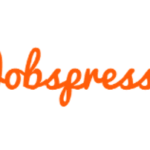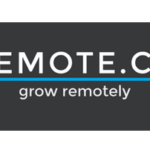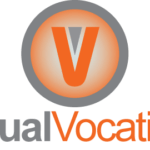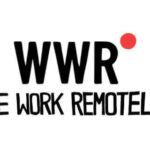Hey, Remote Work Dreamers, This One’s for You
Picture this: It’s a crisp April morning in 2025, and I’m sipping coffee in my cozy home office in Seattle, the Puget Sound shimmering faintly outside my window. No commute. No ironed slacks. Just me, my laptop, and the hum of possibility. That’s the magic of remote work, isn’t it? The freedom to craft your workday, to blend productivity with life’s little joys—like sneaking in a quick stretch session or tossing a ball for your dog between Zoom calls. But here’s the catch: finding a legit remote job that fits your skills and dreams? That can feel like searching for a needle in a digital haystack.
Enter LinkedIn. If you’re not already using its remote work filters to hunt for your next gig, you’re missing out. Big time. I learned this the hard way back in 2023, when I spent weeks scrolling through generic job boards, only to end up with sketchy postings that screamed “scam” louder than a late-night infomercial. LinkedIn’s filters changed the game for me—and they can for you too. In this article, I’m spilling all the tea: how to use these filters like a pro, what mistakes to dodge, and why remote work in 2025 is the future we’re all chasing. Ready to dive in? Let’s do this.
Why Remote Work Is Still the Vibe in 2025
Remote work isn’t just a trend anymore—it’s a lifestyle. In 2025, companies worldwide are doubling down on flexible work models. According to a recent study I stumbled across, over 60% of U.S. companies now offer fully remote or hybrid roles, up from just 20% pre-2020. Crazy, right? Employees love the autonomy (no micromanaging boss hovering over your shoulder), and employers? They’re saving buckets on office space while tapping into global talent pools.
But it’s not all sunshine and home-brewed lattes. Remote work has its challenges—loneliness, Zoom fatigue, and the occasional Wi-Fi betrayal (we’ve all been there). For job seekers, the real hurdle is sorting through the noise to find legitimate remote opportunities. I remember applying to a “remote marketing role” that turned out to require “occasional office visits”—in a city 2,000 miles away. Facepalm. That’s where LinkedIn’s remote work filters swoop in to save the day, helping you zero in on jobs that actually mean “work from anywhere.”
LinkedIn’s Remote Work Filters: Your New BFF
So, what’s the deal with these filters? LinkedIn’s job search tool is like a Swiss Army knife for career hunters. It’s got everything: filters for job type, experience level, company size, and—most importantly for us—remote work options. You can toggle “Remote” or “Hybrid” to narrow your search, and even pair it with location-based filters if you’re picky about time zones. These features have gotten a serious glow-up in 2025, with smarter algorithms that prioritize legit postings and weed out the vague “flexible location” nonsense.
I first discovered these filters during a rainy afternoon job hunt in 2023. I was burned out from my in-office gig, daydreaming about working from a cabin in the woods (cliché, I know). I typed “remote project manager” into LinkedIn, hit the “Remote” filter, and bam—hundreds of listings popped up, from startups to Fortune 500s. It felt like the universe was saying, “Girl, you got this.” Since then, I’ve used these filters to land two remote roles, and I’m never going back.
How to Use LinkedIn’s Remote Work Filters Like a Pro
Alright, let’s get practical. Here’s a step-by-step guide to mastering LinkedIn’s remote work filters. Trust me, it’s easier than assembling IKEA furniture—and way more rewarding.
Step 1: Get to the Job Search Party
Open LinkedIn (app or desktop, your call) and click the “Jobs” tab at the top. Type in your desired role—“graphic designer,” “software engineer,” “customer success manager,” whatever lights you up. Don’t overthink it yet; just get the ball rolling.
Step 2: Flip the “Remote” Switch
Here’s where the magic happens. After your search, you’ll see a toolbar with filter options. Click “All Filters,” then check the “Remote” box under “Location.” Want hybrid instead? There’s a box for that too. You can also add your preferred industry or experience level to tighten the net. I once filtered for “remote, senior-level, tech industry” and found a project management role that paid and let me work from my favorite coffee shop in Capitol Hill. Score.
Step 3: Go Deeper with Advanced Filters
LinkedIn’s advanced filters are like the secret sauce. You can sort by salary range (if companies list it), company size (startups or big corporations?), or specific skills (think “Python” or “SEO”). Pro tip: Use the “Easy Apply” filter to skip those tedious external application portals. I learned this trick after wasting an hour on a company’s broken website—never again.
Step 4: Set Up Job Alerts
Don’t have time to check LinkedIn every day? Set up a job alert. Just save your search with the filters you want, and LinkedIn will email you when new remote jobs pop up. It’s like having a personal assistant who never sleeps. I set one up for “remote content strategist” last year, and it’s how I snagged a gig with a tech startup in under a week.
Step 5: Vet the Listings
Not every job labeled “remote” is the real deal. Read the fine print. Does it mention “occasional travel” or “on-site meetings”? Red flag. Also, check the company’s LinkedIn page for reviews or posts about their remote culture. I once dodged a bullet by noticing a company’s employees complaining about “mandatory team retreats” in the comments. Yikes.
Level Up Your LinkedIn Profile for Remote Jobs
Filters are only half the battle. Your LinkedIn profile? That’s your digital handshake. If it’s not screaming “remote work rockstar,” you’re doing it wrong. Here’s how to fix that.
-
Sprinkle in Remote-Friendly Keywords: Add terms like “remote,” “virtual,” or “work from home” to your headline and summary. For example, my headline reads: “Project Manager | Remote Work Enthusiast | Driving Results from Anywhere.” It’s clear, it’s bold, it works.
-
Showcase Relevant Skills: Remote jobs often require killer communication, time management, and tech skills. List tools you’re fluent in—Slack, Asana, Zoom, you name it. I once got a call-back because I mentioned my obsession with Trello. True story.
-
Highlight Remote Experience: If you’ve worked remotely before, shout it from the rooftops. Describe how you thrived without a cubicle. No remote experience? No problem. Emphasize adaptability—like how you juggled client calls during a cross-country move (been there).
-
Network Like a Boss: Connect with recruiters at remote-friendly companies. Comment on their posts, join LinkedIn groups like “Remote Work Professionals.” I met a recruiter at a virtual coffee chat who later tipped me off about an unposted role. Networking isn’t just for suits.
Mistakes That’ll Tank Your Remote Job Hunt
I’ve made my fair share of blunders, so let me save you some grief. Here are the big no-nos when using LinkedIn’s remote filters:
-
Ignoring Hybrid Roles: Hybrid jobs can sometimes be more flexible than they sound. Don’t skip them without reading the details. I almost passed on a hybrid role that ended up being 90% remote—best decision I didn’t make.
-
Falling for Shady Postings: If a job sounds too good to be true (six figures for “minimal work”?), it probably is. Trust your gut. I once applied to a “remote admin” job that asked for my bank details in the first email. Hard pass.
-
Generic Applications: Tailor your resume and cover letter to highlight remote-ready skills. A cookie-cutter application won’t cut it. I learned this after bombing an interview because I didn’t mention my remote project management tools. Ouch.
Real Talk: Success Stories That Inspire
Let’s talk wins. I know a guy—let’s call him Mike—who used LinkedIn’s filters to land a remote UX designer role in 2024. He filtered for “remote, mid-level, tech,” optimized his profile with keywords like “Figma” and “user research,” and set up alerts. Within a month, he was designing apps from his apartment in Chicago, sipping craft beer on his lunch break. Mike’s secret? He didn’t just apply; he messaged the hiring manager with a thoughtful note about their company’s mission. Bold move, paid off.
Then there’s my friend Sarah, a content writer who snagged a remote gig with a sustainability nonprofit. She used the “Easy Apply” filter and leaned hard into her LinkedIn summary, weaving in her passion for eco-friendly brands. Her takeaway? “Make your profile feel human. Robots don’t get hired.”
Why 2025 Is Your Year for Remote Work
Look, 2025 is a goldmine for remote job seekers. Companies are more open than ever to distributed teams, and LinkedIn’s filters make it stupidly easy to find roles that fit your life. Whether you’re a coder, a marketer, or a teacher pivoting to edtech, there’s a remote job out there with your name on it. But you’ve gotta put in the work—polish that profile, tweak those filters, and don’t be afraid to slide into a recruiter’s DMs (professionally, of course).
Wrapping It Up: Your Remote Journey Starts Now
So, what’s stopping you? LinkedIn’s remote work filters are your ticket to a career that doesn’t chain you to a desk—or a city. I’ve been living the remote life for two years now, and let me tell you, there’s nothing like wrapping up a workday with a sunset walk instead of a soul-crushing commute. Update your profile, play with those filters, and start chasing the job that lets you work from your happy place—whether that’s a beach, a mountain, or your couch with a cat on your lap.
Got a LinkedIn success story? Drop it in the comments—I’m all ears. And if you’re ready to level up, check out LinkedIn Learning for courses on remote work skills or join a community like “Work From Anywhere” to swap tips. Your perfect remote job is out there, waiting for you to click “Apply.” Go get it.










